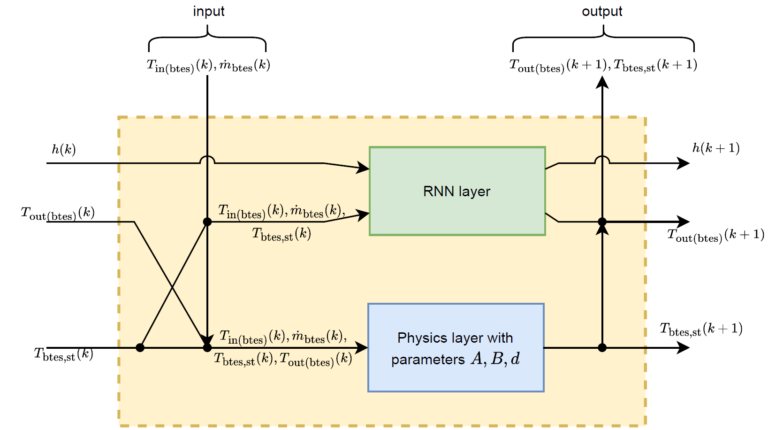New advances in modelling and optimization of BTES using Neural Networks
Earlier this year, Willem Hagemanna, Jaßper Weichmann, Hannes Gernandt, Franziska Krenzlina and Johannes Schiffer published a paper on the use of neural networks in modelling and optimization of borehole thermal energy storage systems. These physics-based networks help to make the model suitable for optimization and control design.
What is this study about?
The study aims to create an accurate and computationally efficient model of Borehole Thermal Energy Storage (BTES) systems for operational optimization of district heating networks, helping in the transition to renewable energy. The authors propose a Physics-Based Neural Network (PBNN) model that combines two models. The first model is a single capacitance thermal model. This is a model based on physical laws. The second model is a Recurrent Neural Network (RNN) model. This is a model that is trained on simulated data. This hybrid model predicts the BTES output temperature accurately while remaining simple enough for integration into optimization tools like Pyomo.

What was actually achieved?
The model achieves high prediction accuracy for output temperature (FIT > 96%). Compared with simple models, the PBNN handles seasonal dynamics and short-term temperature variations better, which is necessary for optimization problems. As a case study, a BTES system with heat pumps and other energy sources was optimized over a one-year horizon to minimize electricity costs. The PBNN models enabled more precise control strategies. Compared to a pure capacitance model, the PBNN improved performance with slightly higher computation time. These findings are promising for future extensions, such as real-world data, predictive control, and integration into larger energy systems.
If you want to read the complete research paper, you can find it here.

PUSH-IT is a project funded by the European Union’s Horizon Europe research and innovation programme under grant agreement No 101096566.
Funded by the European Union. Views and opinions expressed are however those of the author(s) only and do not necessarily reflect those of the European Union. Neither the European Union nor the granting authority can be held responsible for them.
